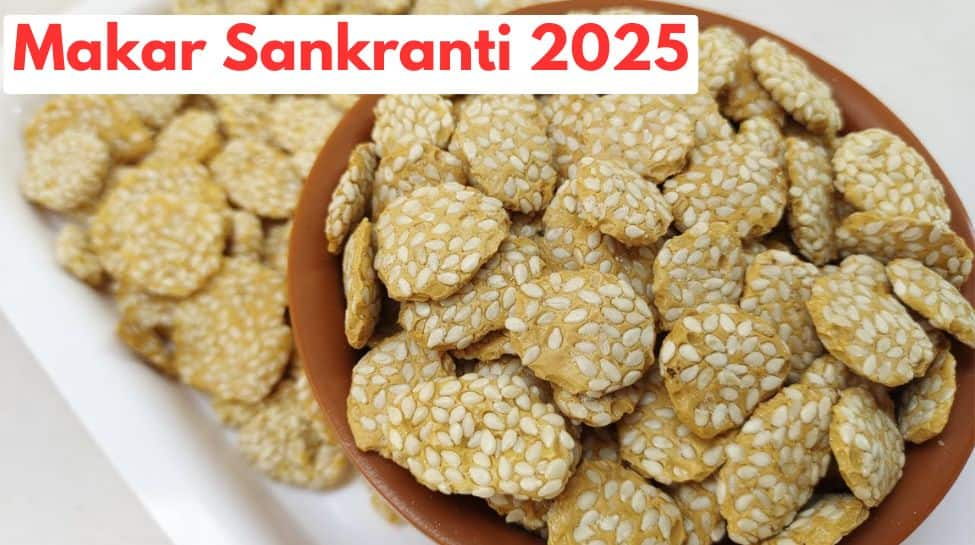Makar Sankranti is one of the most widely celebrated festivals in India, marking the transition of the Sun into the Capricorn (Makara) zodiac sign and the end of winter. It is a festival full of joy, bonfire, kite flying and delicious traditional foods. Among the many dishes associated with Makar Sankranti, jaggery, rewari and gajak are particularly important.
These sweets not only add sweetness to the festivities but also hold deep cultural, symbolic and health significance.
1. Symbol of new beginnings and purity
Makar Sankranti marks a new beginning, the arrival of longer days and the end of the winter solstice. It is a time for people to purify themselves spiritually and physically. Consuming jaggery (jaggery), rewari and gajak made mainly from jaggery symbolizes purification and the beginning of new beginnings. These sweets, with their natural ingredients, are believed to cleanse the body from within, ridding it of winter toxins and preparing it for the warmer months to come.
2. Jaggery – A Natural Sweetener With Health Benefits
Jaggery, or jaggery, is a staple food on Makar Sankranti due to its innumerable health benefits. Unlike refined sugar, jaggery is rich in iron, calcium, magnesium and potassium. It is also known for its ability to detoxify the body by promoting better digestion and improving liver function. Consumption of jaggery helps in increasing immunity especially in winter and provides warmth to the body. It is believed to aid blood circulation, which is an important factor during the colder months of January.
Additionally, jaggery is believed to play an important role in symbolically removing past negative energy. Eating jaggery on Makar Sankranti symbolizes letting go of grievances and embracing sweetness in both life and relationships.
3. Rewari and Gajak – Traditional sweets with nutritional value
Rewari and Gajak are traditional sweets made mainly from jaggery, sesame and peanuts. These sweets are especially popular in North India, where they are prepared during the winter months and offered during Makar Sankranti celebrations.
Revdi: Made from roasted sesame seeds and jaggery, Revdi is crunchy and full of energy. Sesame seeds are a rich source of calcium, iron and magnesium. With the natural sweetness of jaggery, Revris not only provides instant energy but also provides health benefits like promoting bone health and improving digestion.
Gajak: This is another popular Makar Sankranti sweet made from jaggery, sesame seeds and sometimes peanuts. Gajak is rich in antioxidants and acts as a natural source of heat for the body. It is known to help maintain energy levels during cold days and is often consumed to ward off cold.
4. Symbol of solidarity
In many parts of India, Makar Sankranti is not just about personal celebrations but also a time of social bonding. Distributing jaggery, rewari and gajak among friends and family is a way of spreading goodwill and promoting unity. The act of exchanging these sweets is an expression of love and friendship, which reinforces the idea of sweetness in relationships.
The practice of offering these sweets during Makar Sankranti is based on the belief that something bitter (symbolizing the cold of winter) should be replaced with something sweet (symbolizing jaggery and the warmth of these dishes). It reflects the feeling of optimism and joy that marks the occasion.
5. Warmth of tradition
The tradition of eating these sweets is also linked to the agricultural calendar, as Makar Sankranti is celebrated at the time of harvest. This festival marks the time when crops like sugarcane and sesame are harvested, which are major ingredients in jaggery, rewari and gajak. Eating these dishes is a way of acknowledging the harvest and expressing gratitude towards nature’s bounty.
Consuming jaggery, rewari and gajak during Makar Sankranti goes beyond just the indulgence of delicious sweets; It is a celebration of health, tradition and togetherness. These dishes not only symbolize the end of winter and the arrival of the new season, but they also serve as a reminder to cherish life’s simple pleasures. Whether enjoyed warmly at family gatherings or shared with friends, these sweets help enhance the festival spirit and connect us with our cultural roots.
(This article is for your general information only. Zee News does not confirm its accuracy or reliability.)
